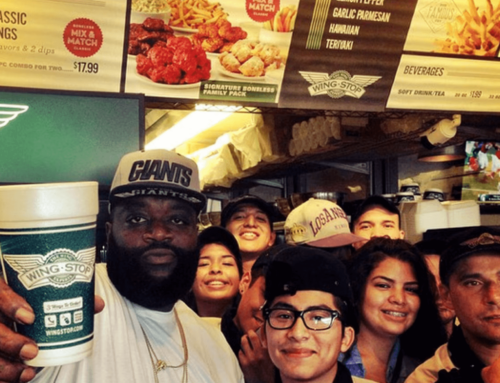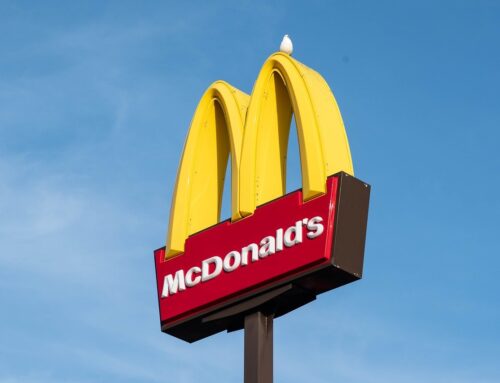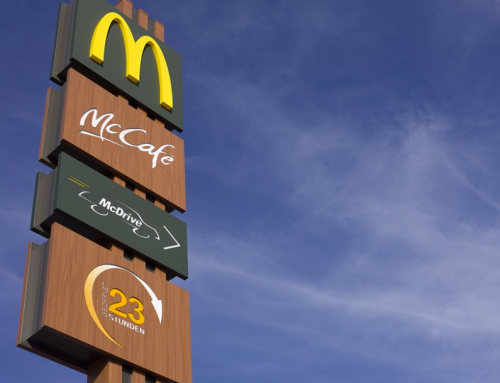What does a Texas Roadhouse franchise cost to open? Texas Roadhouse requires a $40,000 franchise fee with a liquid capital ranging from $442,000 to $641,500. Total startup cost will be $3,595,500 to $6,463,500 before you can open the doors. This is a significantly higher startup cost than other franchise restaurants like Little Caesars that tops out at an investment level of $1.6 million.
A franchise agreement with Texas Roadhouse requires an initial term of 10 years which is renewable in 5-year terms. Texas Roadhouse is one of the top-ranked steakhouses in the U.S. with 28 current international chains. This is also a testament to the growth and stability of the concept globally.
In this franchise review, I evaluate the total cost to invest in this steakhouse restaurants and help you decide if it’s worth the price tag. Take our 8-minute franchise quiz to find out if this is the right option for you.
Financial Requirements
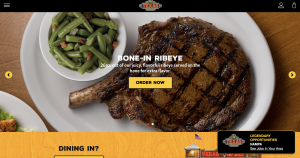
Texas Roadhouse.
Here’s a snapshot of the fees and expenses associated with opening a Texas Roadhouse.
| Fees/ Expenses | Financial Amount |
| Initial Franchise Fee: | $40,000 |
| Working Capital | $442,000 to $641,500 |
| Total Investment | $3,595,500 to $6,463,500 |
| Royalty Fee | 4.0% |
Take note that the initial franchise fee is the amount you must pay Texas Roadhouse in order to open your own restaurant. Working capital is the amount you have on hand and can access immediately if needed. Total investment is the estimated amount you’ll need to get the franchise up and running.
Average Sales / Revenue per Year
Texas Roadhouse’s current annual sales sat at $2.969 billion at the end of June 2021. Despite the health crisis pandemic, total revenue has increased by 18.52% from 2019. The average annual sales per unit is at $5,359 (thousands). Texas Roadhouse doesn’t show much of their average profit per franchise, but estimates show that each franchise earns a net profit of $522,000 per location after EBITDA (@ 12.3% EBITDA margins).
Profits from a Texas Roadhouse franchise like any other business are dependent on a variety of factors like location and marketing.
Franchise Facts
| Year Founded | 1993 |
| Total Units | 611 outlets in 49 states with 28 international branches in ten countries |
| Industry | Full-Service Restaurants |
| Category | Steakhouse |
| Franchising since | 1995 |
Texas Roadhouse is a steakhouse chain with a distinctly Western-style with a diverse menu of steaks, ribs, chicken, and seafood. The steaks at Texas Roadhouse are always fresh-cut in the restaurant and never frozen. With their ribs and steaks, the restaurant chain has even won national cooking competitions.
The average Texas Roadhouse employs about 100 individuals and serves between 220 and 270 visitors at any time. Today, there are 69 Texas Roadhouse franchised sites in the United States as of the 2021 Franchise Disclosure Document. The expansion plan for Texas Roadhouse is to establish each of their concepts as a local hometown favorite for a large swath of customers looking for high-quality, inexpensive meals provided by friendly, appealing service.
How Much Profit Do a Texas Roadhouse Franchisee Make Per Year?
At this point you understand this franchise will require an investment between $3 – $4 million. And I’m sure you’re curious… Will I make this money back? Back in 2017, each Texas Roadhouse franchise brought in an annual gross profit of $1 million before EBITDA.
Considering that 2017 was one of the years the restaurant had scaled down profits on year-on-year comparison, times have changed and Texas Roadhouse’s revenue has been on the uptick in recent years. Today, each Texas Roadhouse franchise store earns an average of $4.25 million before EBITDA. That’s a whopping 325% increase in just the past 4 years.
Franchise Review: Is the Crumbl Cookies Franchise Too Expensive?
Advantages
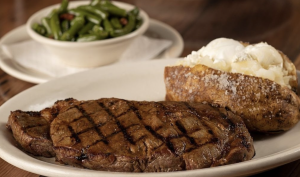
Steak and potatoes.
As with most food franchises, there are advantages and challenges in opening up a brick-and-mortar restaurant. In this section, I present the different benefits of operating one of the biggest restaurants in the country.
Texas Roadhouse is a rapidly expanding restaurant corporation that primarily operates three casual dining restaurants: Texas Roadhouse, Bubba’s 33, and Jaggers. In Clarksville, Indiana, the first Texas Roadhouse opened in 1963. After more than 50 years in business, it’s clear this concept has staying power.
Growth Strategy for the Long Run
The following fundamental components underpin the operating strategies that support growth.
Competitive compensation for managers. Individual restaurant managers and multi-restaurant operators are referred to as managing partners and market partners, respectively, under Texas Roadhouse’s performance-based compensation structure. Every one of these partners is paid a base pay as well as a performance bonus based on a percentage of their restaurant’s pre-tax revenue. This approach helps you retain top talent since management is fairly compensated.
Providing freshly prepared, high-quality meals. Most steaks are hand-cut with sides that are made from scratch. If you’ve ever dined at a Texas Roadhouse before, you know some of the side are one of a kind like the loaded baked potatoes, sweet potato, and Texas chili.
Dinner is the name of the game. Texas Roadhouse restricts its operating hours to dinner only on weekdays in a large percentage of their locations with about half of the units offering lunch on Friday. Texas Roadhouse’s teams only have to prepare and handle one shift each day in the week by focusing on dinner. This makes the operations simpler by focusing on the busiest times of the day.
Fun with high-quality service. Texas Roadhouse thinks that the level of service, value, and ambiance they provide is critical to generating repeat business. They strive to keep their table-to-serve ratios low so that servers may devote their full attention to guests and cater to their specific demands.
Price points that are appealing. They provide a variety of price points in order to meet each guest’s budget and value expectations. Compared to most steakhouses, you’ll be surprised at how reasonable the menu prices have stayed in spite of inflation.
Texas Roadhouse, Inc. has strong free cash flows that provide resources in the hand of the company to expand into new projects. According to Texas Roadhouse’s most recent 10-K filing, in 2018 the company had $215 million in net cash provided by operating activities and $171 million in net cash used for investing activities.
This left Texas Roadhouse with $44 million in free cash flow after accounting for its capital expenditures. This is a significant increase from the $17 million in free cash flow the company generated in 2017. While Texas Roadhouse has been spending more on capital expenditures in recent years due to its expansion efforts, its strong free cash flow provides it with the resources it needs to continue growing. Texas Roadhouse’s free cash flow will likely continue to be a key driver of its growth going forward.
Challenges
Despite the restaurant chains’ surging sales, there are still hurdles they still need to contend with. After all, there’s no perfect business, right? Though the challenges aren’t that concerning, as a premier steakhouse restaurant, the company was quickly able to adjust and rebound on the biggest challenge every business has ever faced – including the recent health crisis.
Since sales volumes have exceeded estimates and caused the company to seek supply on the open market, Texas Roadhouse expected commodity cost inflation of 10% in the second half of the year mostly due to rising beef prices.
Related Reading: Will In-N-Out Burger Ever Franchise? (Cost + Startup Process)
Aside from higher ingredient costs, the tight labor market is projected to continue to be a disadvantage for Texas Roadhouse for the rest of the year.
Still, as long as Texas Roadhouse can continue to attract customers for on-site dining, they might be better positioned to attract wait staff. As a server, you’re less concerned about the hourly wage and with most of the income coming from tips. If the tables turn over quickly, wait staff won’t be hard to find.
Covid-19 Pandemic
Texas Roadhouse CEO Kent Taylor recently said that Covid-19 gave Texas Roadhouse two choices. It may either accept the implications of closed dining rooms or adjust. According to him, it has never been their way to sit back and be content with a business-as-usual approach. The corporation was not going to sit back as they confronted their greatest challenge yet.
But don’t confuse Texas Roadhouse’s stability with obstinacy. For decades, it has prioritized core equities over following the crowd. The restaurant remains focused on what works.
Texas Roadhouse began by moving activities outside to parking lots right away. The company began to focus on off-premises volume, introducing family packs and ready-to-grill steaks. It also procured and installed equipment and procedures to assist staff as quickly as possible.
The company’s top executives also forewent remuneration to help front-line staff. Electronic surveys and temperature checks were setup at some locations for a short period of time.
The Stigma of Past Litigation
Texas Roadhouse was charged by the Equal Employment Opportunity Commission in the United States in 2017. Applicants who were over the age of 40 were allegedly rejected employment at Texas Roadhouse due to age discrimination.
The charges were disputed by Texas Roadhouse, and the trial commenced on January 9, 2017. The first trial failed to reach an agreement, and a second trial was scheduled for May 2017. However, prior to the second trial, Texas Roadhouse committed to a $12 million fund and to make a concerted effort to hire workers over 40 years old.
Is the Texas Roadhouse right for you?
Over the past couple of years, Texas Roadhouse has proven it can remain a viable business no matter what black swan event comes there way. In 2021, the company recorded global sales of more than $3.4 billion. Texas Roadhouse is on the upswing as a thriving franchise, generating billions in profits and hundreds of millions in net income.
If you’re interested in owning a Texas Roadhouse franchise, you’ll need to dig further into the numbers to see if it’s the right fit. Although owning a franchise is a significant investment, conducting research is an essential first step.
Kent Taylor founded Texas Roadhouse in Clarksville, Indiana, in 1993 with the purpose of providing a lively environment for people of all ages while still providing a fantastic meal for everyone. It is part of the Texas Roadhouse Inc, which has its headquarters in Louisville, KY. They are well-known for their hand-cut steaks, fall-off-the-bone ribs, made-from-scratch sides, fresh-baked bread, and legendary margaritas.
In the late 1990s, the company grew quickly and went public in 2004. In 2011, the business began expanding globally, with its first location in Dubai, United Arab Emirates. As of March 2021, the business has 611 outlets in 49 states and 28 offshore sites in ten countries. Texas Roadhouse is also known for its trademark free buckets of peanuts with dinner bread rolls and honey cinnamon butter served at each table.
If you’re serious about opening a Texas Roadhouse Franchise, take our 8-minute quiz to learn if this is the right concept for you.

